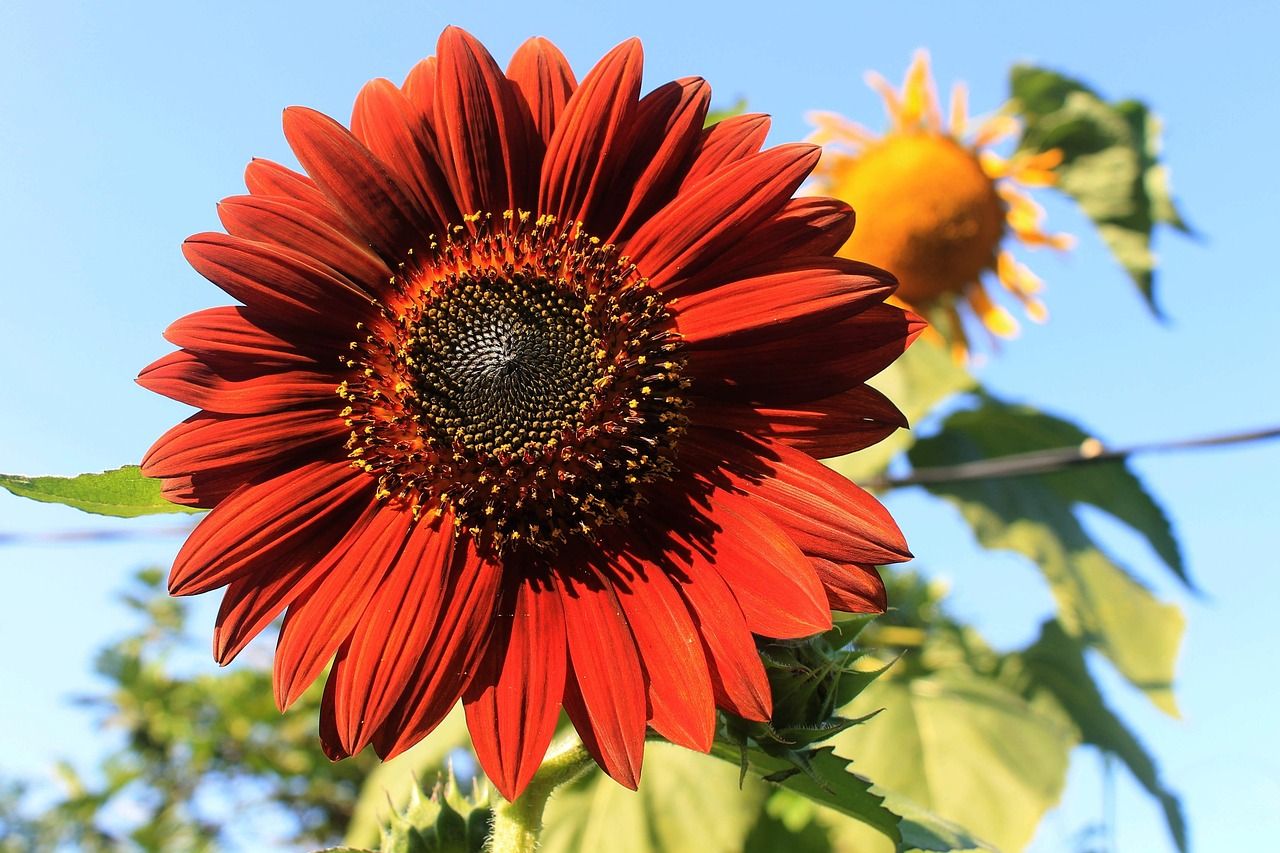Planting and Growing Velvet Queen Sunflowers Using Traditional and Sustainable Techniques

Velvet Queen Sunflower Seeds - Rusty Red Petals, Attractive Garden Cut Flowers | eBay
Find many great new & used options and get the best deals for Velvet Queen Sunflower Seeds - Rusty Red Petals, Attractive Garden Cut Flowers at the best online prices at eBay! Free shipping for many products!

Introduction
- Velvet Queen Sunflower (Helianthus annuus) is a stunning variety known for its deep red-orange petals and large, dark center.
- This guide will provide detailed planting and growing instructions for both traditional and sustainable methods, including no-till, permaculture, and regenerative techniques.
- Instructions will take into account variations in growing locations and conditions.
Planting Instructions
Choose the right time
- Plant Velvet Queen Sunflowers after the last frost when the soil temperature is at least 50°F (10°C).
- In cooler climates (zones 3-6), plant in late spring. In warmer climates (zones 7-10), plant in early spring.
Select a suitable location
- Velvet Queen Sunflowers require full sun for optimal growth.
- Plant in well-draining soil with a pH between 6.0-7.5.
Prepare the soil (Traditional method)
- Remove weeds and grasses from the planting area.
- Till the soil to a depth of 4-6 inches (10-15 cm) and incorporate organic matter such as compost or aged manure.
Prepare the soil (No-till method)
- Mow or cut any existing vegetation as close to the ground as possible.
- Spread a layer of compost or aged manure (1-2 inches) over the planting area to provide nutrients and improve soil structure.
Sow the seeds
- Traditional method: Plant seeds 1 inch (2.5 cm) deep and 6-8 inches (15-20 cm) apart in rows, or space them evenly in a bed.
- No-till method: Use a seed injector or hand broadcasting to distribute seeds at the same depth as the traditional method.
Water and maintain
- Keep the soil consistently moist, but not saturated, until germination occurs (usually within 7-10 days).
- Reduce watering frequency as the plants establish, but maintain consistent moisture levels.
Growing Instructions
Incorporate permaculture and regenerative techniques
- Plant Velvet Queen Sunflowers in a polyculture setting to promote biodiversity and soil health.
- Utilize swales, contour planting, and keyline design to maximize water retention and distribution.
- Encourage beneficial insects and wildlife to create a balanced ecosystem and natural pest control.
Fertilization
- Sunflowers are heavy feeders and may require additional fertilization for optimal growth.
- Utilize compost, aged manure, or organic fertilizers to maintain soil health and avoid chemical inputs.
Pest and disease management
- Monitor for pests such as aphids, cutworms, and sunflower moths, and diseases like powdery mildew or root rot.
- Practice proper sanitation and ensure good air circulation to reduce disease pressure.
Irrigation
- Established Velvet Queen Sunflowers are drought-tolerant but will benefit from supplemental irrigation during extended dry periods.
- Utilize water-saving techniques like drip irrigation, rainwater catchment, or mulching to conserve water resources.
Weed control
- Traditional method: Employ mechanical cultivation or chemical herbicides to manage weeds.
- Sustainable method: Use mulching, cover cropping, or hand weeding to suppress weed growth and minimize soil disturbance.
Harvesting
- Velvet Queen Sunflowers are ready to harvest when the back of the flower head turns brown and the seeds are plump and firm.
- Cut the flower heads with sharp shears or a knife, leaving about 6-12 inches (15-30 cm) of stem attached.
- Hang the flower heads upside down in a cool, dry, and well-ventilated area to dry for several weeks.
- Once dry, remove the seeds by rubbing the flower head or threshing, and store in a cool, dry place in an airtight container until needed.
Seed saving and storage
- If you wish to save seeds for future planting, allow some of the sunflowers to mature fully on the plant.
- Harvest the seeds when the back of the flower head turns brown and the seeds are plump and firm.
- Remove the seeds from the flower head by rubbing or threshing, and then store in a cool, dry place in an airtight container until needed.
By following these detailed planting and growing instructions for both traditional and sustainable methods, you can successfully cultivate Velvet Queen Sunflowers in various growing zones, providing numerous benefits such as vibrant flowers and nutritious seeds. Incorporating no-till, permaculture, and regenerative techniques will not only promote a healthy and productive crop but also contribute to a more environmentally friendly and sustainable agricultural system.
